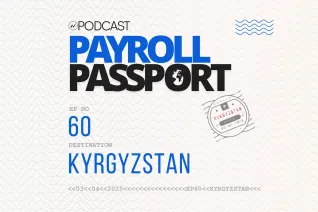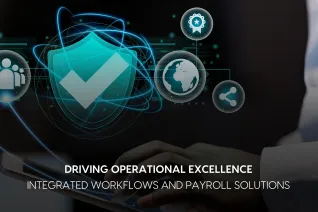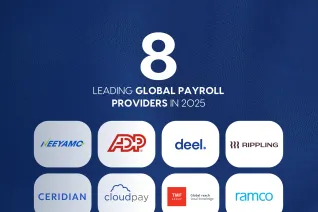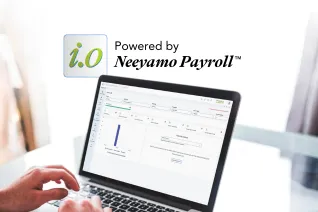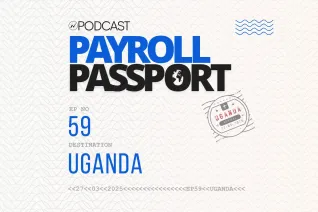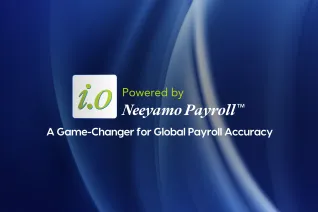Long-Tail HRIS: Streamlining HR for the Geographically Dispersed Workforce

92 million.
Global digital jobs are expected to increase by around 25% by 2030. According to WEF's whitepaper, The Rise of Digital Jobs, growth in the working-age population, the addition of new jobs, and a combination of technological, sustainability, and economic trends are expected to drive this growth.
The rapid shift towards a remote workforce poses a pressing challenge for traditional HRIS. These systems, originally designed for centralized workforces, often struggle to cater to the needs of geographically dispersed employees, commonly known as the 'long-tail' workforce.
The urgency to adapt HRIS to this new reality is underscored by the fact that these smaller, scattered teams necessitate a different approach to HR management.
What is long-tail HRIS?
This is where Long-Tail HRIS comes in. Designed specifically to address the challenges of managing a geographically dispersed workforce, Long-Tail HRIS offers a suite of features and functionalities that traditional HRIS simply can't match. Let's delve deeper into what Long-Tail HRIS is and how it can benefit your organization.
What are the challenges of a traditional HRIS solution?
Managing a geographically dispersed workforce with traditional HRIS can lead to a complex web of issues.
- Increased Complexity: Managing separate systems for payroll, recruiting, and reporting for geographically dispersed employees with a smaller number in each location creates a complex mess. Imagine handling separate logins, processes, and data for just a handful of employees at each location.
- Compliance Challenges: Siloed systems make tracking various labor laws and regulations across locations a nightmare. Without a unified platform, ensuring the consistent application of these regulations for all employees becomes a significant hurdle.
- Data Invisibility: Consolidating data from separate systems for a small group of employees in each location is cumbersome and time-consuming. Siloed systems make tracking metrics and gaining insights specifically for these geographically dispersed employees difficult.
- Communication and Engagement: Communication and keeping long-tail employees engaged is difficult with spreadsheets and separate systems. There's a lack of centralized communication tools and features like company announcements or self-service options that could improve engagement for geographically distant employees.
YOU MAY ALSO LIKE I Cutting Through the Clutter: Streamlining your HR Tech stack
What are the benefits of a long-tail HRIS solution?
Tailored Functionality: A well-designed HRIS (Human Resource Information System) can cater to the specific needs of long-tail locations. This might involve offering modules relevant to their size, like streamlined recruitment or simplified timekeeping features.
Centralized Data Management: An HRIS designed for long-tail operations would ideally offer a centralized data repository. This eliminates the need to compile information from various sources and simplifies employee data entry, storage, and access, regardless of location.
Improved Compliance Management: A long-tail HRIS can help with compliance in different locations by providing features like alerts on upcoming regulation changes, automated workflows for handling local requirements, automated reminders, reporting tools, and integrations with local regulatory databases.
Enhanced Employee Engagement: A long-tail HRIS can bridge the gap for geographically dispersed teams by offering features like self-service portals, mobile access, internal messaging, and company announcements. This fosters a more streamlined experience and better communication for all employees.
Improved Visibility: Consolidated data from all locations within the HRIS provides better visibility into workforce trends, performance metrics, and employee demographics, even for smaller teams in remote locations.
Cost-Effectiveness: A long-tail HRIS solution might offer flexible pricing models that scale based on the number of employees in each location. This could be more cost-effective than maintaining separate systems for each function.
Scalability: Long-tail solutions can be scalable, meaning they can adapt to fluctuations in employee numbers at these locations without requiring extensive upgrades. This can be more cost-effective compared to maintaining multiple siloed systems.
DOWNLOAD | Navigating the Most Common Payroll Processing Challenges
What are the key considerations for choosing the best long-tail HRIS solution?
While specific vendors may offer varying features, focus on core functionalities like those mentioned above. Consider factors like scalability, security, and ease of use when evaluating long-tail HRIS solutions.
While long-tail HRIS offers significant benefits, it's crucial to underscore the importance of addressing potential drawbacks, particularly data security. With employees scattered globally, a centralized HRIS becomes a repository for sensitive personal and financial data. A data breach could have severe consequences, including legal repercussions and loss of employee trust. To reassure you about this risk, look for HRIS providers that offer robust encryption, multi-factor authentication, and regular security audits. Additionally, the provider must ensure that it complies with international data protection regulations like GDPR or CCPA.
ALSO READ | Essential Data Security Measures for Global Payroll
Another challenge is the learning curve associated with adopting a new system. Employees, particularly those in remote locations with limited IT support, may struggle to adapt. This can lead to errors in data entry, underutilization of features, and frustration. To alleviate these concerns, prioritize HRIS solutions with intuitive interfaces and comprehensive training resources. Consider solutions that offer multilingual support and 24/7 customer service to cater to your global team. Lastly, plan a phased rollout with ample time for training and feedback to ensure smooth adoption.
Proactive Risk Management: A Path to Success
By proactively addressing these concerns, you cannot only minimize risks but also maximize the benefits of long-tail HRIS. The key is not just to implement the technology, but to do so in a way that prioritizes security, user experience, and ongoing support. This approach can lead to exciting outcomes and opportunities for your global team.
As the global workforce continues to evolve, long-tail HRIS is not just an option—it's a necessity. With global digital work presenting an opportunity to utilize talent around the world, the future of HR lies in efficiently managing geographically dispersed teams. Long-tail HRIS is at the forefront of this evolution, offering a unified platform that streamlines processes, ensures compliance, and fosters engagement across borders.
Future-Proofing Your HR with Long-Tail HRIS
The time to act is now. Evaluate your current HR processes and ask yourself: Are they truly equipped to handle the challenges of a globally dispersed workforce? If not, it's time to explore long-tail HRIS solutions. Look for providers like Neeyamo that offer robust security measures, seamless integrations with your existing tools, and a proven track record in managing remote teams.
By embracing long-tail HRIS, you're not just adapting to the current trend; you're future-proofing your HR operations. In a world where talent is increasingly mobile and work is borderless, the companies that thrive will be those that can effectively manage, engage, and empower their employees—no matter where they are.
Don't let geographical barriers limit your talent pool or hinder your growth. Invest in long-tail HRIS today, contact us at irene.jones@neeyamo.com to position your organization as a leader in the global, digital workforce of tomorrow.
Latest Resources
Stay informed with latest updates
If you're curious and have a thirst for knowledge pertaining to the HR, payroll, and EOR universe, don't miss out on subscribing to our resources.





